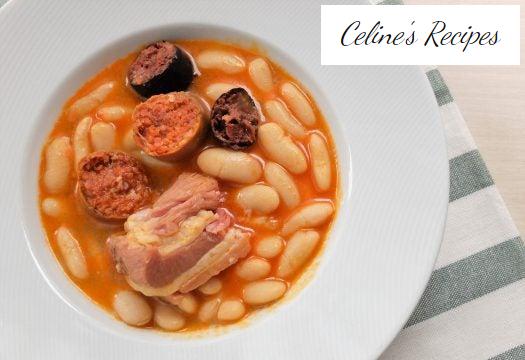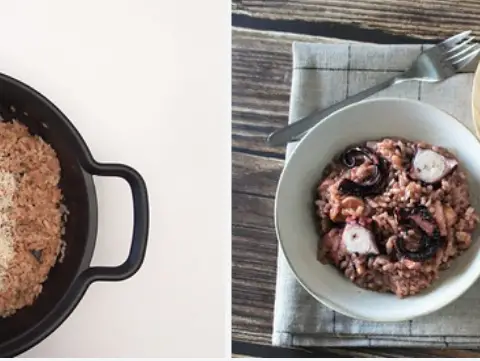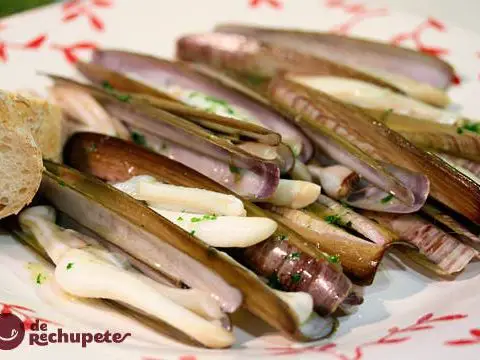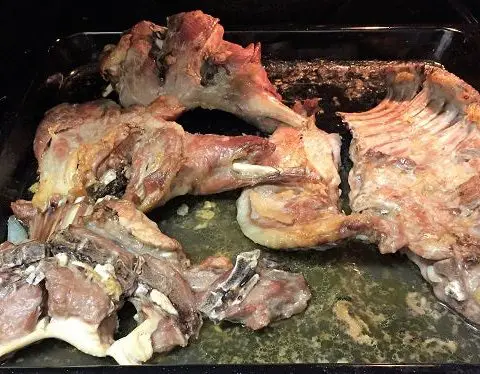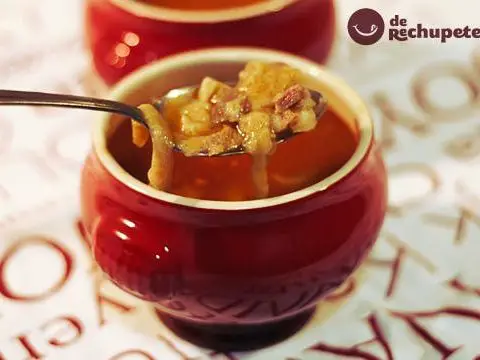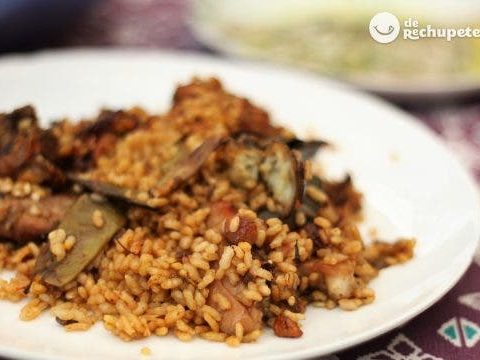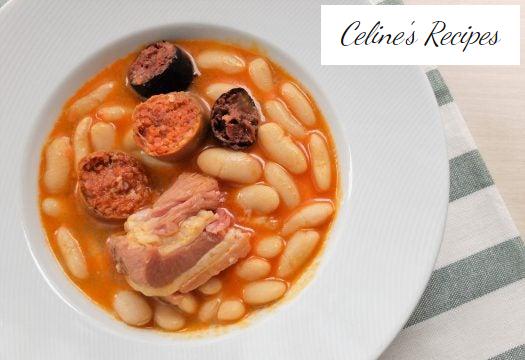
Info.
- Half
- 180 minutes
- For 6 people
- 2.8 € / person
- 285kcal per 100g.
Asturian bean stew recipe .
After a week of work at work, I arrive at the expected weekend and I am going to do my best in the kitchen preparing an Asturian stew as God commands, with a siesta and everything.
Asturian beans, one of the most popular spoon recipes in Spain.
The way of cooking this dish is simple, although not easy. Several factors can spoil the recipe: not desalting meats well, cooking over high heat, that the water used does not meet the necessary conditions.
But I tell you that the most important thing is its ingredients. As in Galician cuisine, Asturian has an excellent quality raw material that helps make it one of the most appreciated in Spain. There are many fabes but none like Asturians.
It is a simple recipe in which high quality ingredients prevail and a fairly slow cooking time.
A recipe that made with love and with the right ingredients will turn out as if you were in Asturias.
Before cooking. Farm beans
- One of the important steps is choosing the type of bean. I use the most typical one on the stew: “de la Granja” fabes found in any supermarket.
- It is a soft and buttery variety appropriate for this recipe. Asturias cultivates this variety throughout its territory. They are characterized by having a great flavor and a smooth texture after cooking, a gastronomic treasure.
- We spread them on a flat surface and discard those that are damaged. We wash them to remove impurities.
- We leave them in a bowl with cold water to soak overnight, usually 12 hours. It is not necessary to add salt at the time of soaking. The next day we drain them and set aside until it is time to prepare them.
- We soak, in warm water, the cured bacon and the ham bone from the night before preparing the bean stew.
Preparation of Asturian bean stew
- Add the beans in a casserole, if possible low and wide (if it is clay better). We cover with water until there are a couple of fingers above them.
- We stir again so that everything comes together well. Heat over high heat until it starts to boil.
- When it starts to boil we introduce the bacon, the chorizos, the ham bone and the blood sausages (previously punctured to avoid bursting).
- Make sure that the blood sausages and sausages always stay on top to avoid possible breaks that would spoil the bean stew.
- We froth for a few minutes. That is, we remove the foam that normally contains impurities and at the same time defat the broth a little.
- When it takes 1/2 hour to cook over high heat we add the saffron threads diluted in a little hot broth from the casserole.
Fabada cooking and final presentation
- We lower the cooking temperature. We add salt to taste, it is important to try the broth since we have added the ham bone and they can be salty.
- We let them cook slowly at low temperature for 2 hours. Always stirring occasionally with a wooden spoon without breaking them. During these two hours, we add cold water twice to “scare them” (it breaks the boil and helps it cook perfectly).
- We try the fabada to see if they are already tender and we rectify with salt. Once tasted and tender we remove from the fire and let stand for about an hour.
- Next we remove the sausages, the blood sausage, the bacon and the ham bones. We prepare the meat, cutting the sausages into generous slices. Chop the bacon and take advantage of the bone meat. We booked for the presentation.
- To dish the best is a deep dish with the bean stew and the meat on top, that easy.
Remember that the fabada is better from one day to the next. If you manage to make it in a clay pot, it is to die for. You will end all with fartura as it is usually said in bable.
Your advice and recommendations. Joaquin’s Recipe
Joaquín Monte, another great Asturian and follower of the blog, sent me his version of the Fabada a few days ago. He tells us that it is a little different than what I propose and tells us that he has not invented anything. That the Fabada Asturiana was updated by people like Pedro Morán from Casa Gerardo and Luís Alberto from Casa Fermín. Totally agree!
He tells us that the secret is the smoke flavor of the sausages that accompany the Asturian bean stew and logically of its beans. Thank you very much Joaquín.
I leave you with your recipe:
Ingredients
- 1 K of beans.
- Chorizos 2.
- Black pudding 2.
- 2 pieces of cured bacon. (300 g).
- 1 good piece of pork (400-500 g).
- 1 onion.
- 3 garlic cloves.
- 2 sachets of saffron threads.
Preparation of the broth
- 2 chicken butts (or one butt and two wings …)
- 2 leeks.
- 1 beautiful carrot.
Preparation of the fabada
- Grab a quick pot, the chicken, two leeks, and a carrot. Fill the water to the top and make a broth. Remove the vegetables and chicken (both can be used for other meals) and strain the broth. Reserve it.
- You put them to soak the night before, in plenty of cold water. Also the bacon and the ham are put in cold water so that they desalinate a little the night before.
- Take a pot of stew, the beans that you have drained from the soaking water, along with the bacon and the pork shoulder.
- Cover everything with the poultry stock (1 finger above, no more) and put on the fire. Add a not very large onion and the garlic cloves, all very well chopped.
- When the cooking starts to boil, you must remove the foam that forms. It does not matter if when you “skim” you take a little chopped onion (it always happens), but you have to do it well.
- Lower the heat so that the cooking is not too aggressive, because they would all break.
Cooking and presentation of the fabada
- In another pot, cook the chorizo and black pudding. Introduce them with the not very hot water, to avoid that the blood sausage can break (some people prick it with two sticks, I have not done this). The case is that the blood sausage does not break. In fifteen minutes, once the boil breaks, it will be cooked.
- At the same time, the beans will cook. Add broth and, if you do not have it, water, so that the beans are always covered. When they take 2 hours / 2 and a half hours, approximately, they will be done.
- Add the chorizo and black pudding and a few tablespoons (2 or 3 soup pots, enough) of the fat from the pot in which they were cooked. This is one of the secrets to make it look good without being too strong and “killing” people.
- Stir the pot (without stirring, so they don’t break) so that everything mixes and cooks for 20 minutes.
- Take the saffron in sachets, put them in the pot for a few minutes and chop the strands. That we add the last 15 minutes of cooking.
- To serve it, take out the bud, slice it and put it on a tray. The fabada in tureen or vegetable stew. If you want, you can plate with the beans in the bottom and on top a piece of chorizo, one of blood sausage, one of bacon and one of pork.
Do you like Asturian cuisine
- If you like Asturian cuisine on the blog you can find a lot of recipes.
- In Asturias, you not only eat well, but also in abundance. In addition to being a natural paradise, it is accompanied by a great companion, its enviable gastronomy. I recommend these recipes to fall in love a little more with this green paradise.
- Is there a ‘fame’? A few scallops at the cabrales will not disappoint you if you like meat. If you like the spoon, you can not miss trying its world famous fabes with clams or those spectacular verdinas .
- To open your mouth, you have their pregnant buns or stuffed onions (the ones I like the most are with tuna, but you also have them with meat).
- To end a gastronomic day that you will not forget, its desserts, the richest rice pudding that you have ever tasted or Pravia’s tocinillo de cielo . And of course a good coffee or infusion must be accompanied by some muscovites or some Casadielles or Casadiella .
- There are a lot of recommendations that you should not miss trying in Asturias or at home, why not?
